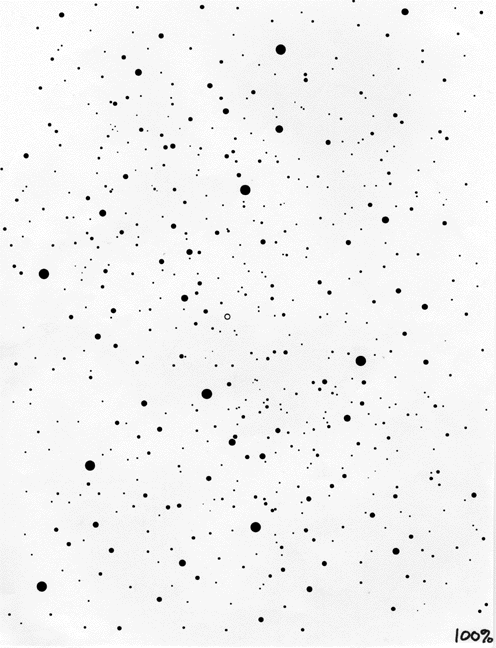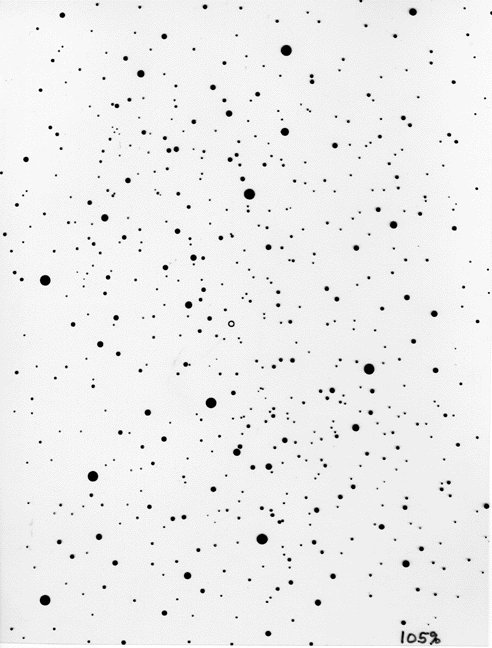
Where is the center of the Universe? Here, there, and everywhere.
Introduction
Two transparencies can be used to model the expansion of the universe.
Material
To Do and Notice
Place the transparency labeled "105%" which represents the universe of today on the overhead projector.
Introduce it as a model of a portion of the universe in which each black dot stands for a cluster of galaxies.
Ask where is the center of the Universe ?
(If someone says in the middle of the page point out that this is only a portion of the sky and, like the sky, it wraps completely around the surface of a sphere.)
Remove the first transparency and replace it with the one labeled "100%" which is the universe a billion years ago.
Ask them to notice the difference between this transparency and the last one. The difference is hard to see.
Place both transparencies one on top of the other. Arrange them so that one of the dots on one transparency is on top of the same dot in the other transparency. The resulting perception is that of an explosion from the dot.

Now it's obvious that the observers on the selected dot see that the universe is expanding about their position.
Now switch the transparencies so that a different dot is in the same position on both. The universe seems to expand about that position.
Whichever dot you choose, the universe seems to expand about it.
So every point in the universe sees itself at the center of the expansion.
What’s Going On?
The transparency for the universe today was made by enlarging the transparency for the universe 1 billion years ago by 5% percent using an enlarging copier.
Every space on the transparency is enlarged by 5 percent. The real universe is the same, in a billion years all of the spaces between galaxy clusters has expanded by about 5 percent. Viewed from any point the Universe seems to be expanding about that point.
Going Further
Slightly rotate one of the transparencies and notice the resulting spiral pattern.
Etc.
It seems funny that in the real Universe the galaxy clusters are bright against a black background while in this model they are dark against a bright background.
While the vacuum of the universe expands, atoms, planets, stars and even galaxies do not expand. The electric and gravitational forces holding them together are stronger than the forces of expansion.
Credits
I was shown this activity circa 1980 by Jay
Bolemon.


|
Scientific Explorations with Paul Doherty |
|
10 March 2001 |